Hammerhead Sharks are one of the most majestic creatures of the vast ocean. And the Hammerhead sharks hold a special place among them.
These carnivorous sharks have a unique T-shaped head that is like a hammer. The T-shaped head isn’t for show, they use it to sense their prey. And there’re multiple variations of the hammerhead sharks, which all share the same head shape. Hammerheads prefer the ocean and warm waters.
Unlike their deadly appearance, hammerheads aren’t always a threat to humans unless it’s provoked. It’s a gentle creature that’s more than happy to leave you alone if you’re not a danger to their natural habitat.
In this article, we’ll explore the behavioral traits of hammerhead sharks and how they impact the ecosystem. So, without further ado, let’s dive in.
If you want to know more details about hammerhead sharks, you can check my article
The Significance of Understanding Diversified Behavioral Traits of Hammerhead Sharks
The importance of the hammerheads is more than it meets the eye. Hammerhead sharks help to maintain the balance of marine life by controlling the populations of their prey, such as rays, fish, and other smaller sharks.
But that’s not all, hammerheads are apex predators. And the predatory nature of hammerheads helps prevent the overpopulation of certain species, which can have cascading effects on the entire food web.
This delicate equilibrium prevents the unchecked proliferation of specific species while safeguarding others from decline.
So, for harmonious coexistence is nothing short of crucial for the well-being of our beloved coral reefs and the vast oceans they inhabit.
It’s the very essence of biodiversity and ecological resilience, ensuring that our underwater world thrives with vigor and stability.
Growing Habits: Structural Adaptations
Hammerhead sharks, scientifically known as Sphyrna mokarran, are a fascinating group of sharks with distinctive features that set them apart from other shark species.
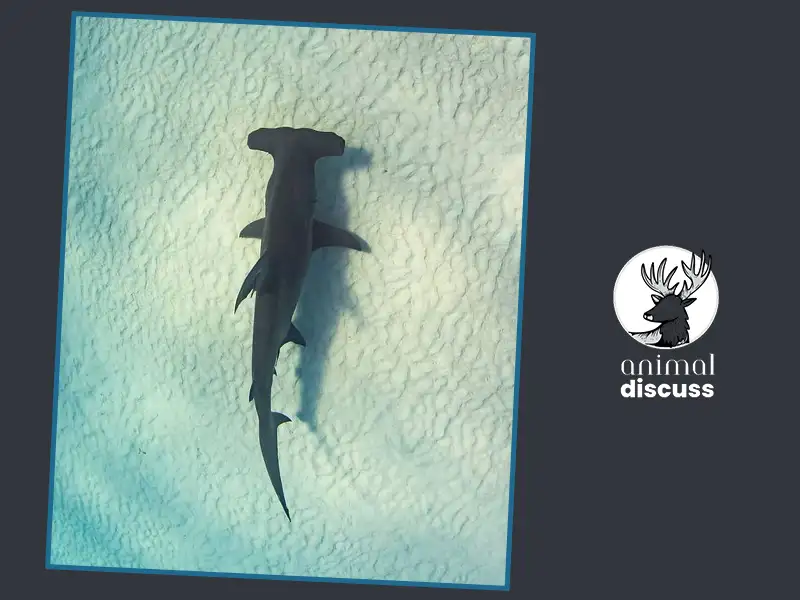
Let’s have a look at what you need to know about the structural growth of these remarkable creatures –
Unique Head Shape
By birth, the hammerhead shark’s defining feature is its distinctive, flattened, hammer or shovel-shaped head, known as a cephalofoil.
This extraordinary cranial structure serves multiple purposes, from enhancing their maneuverability to elevating their sensory perception.
Speedy Swimmers
These sharks exhibit impressive swimming abilities, reaching top speeds of 32 kilometers per hour (20 miles per hour).
Unique Fin Length
Hammerhead sharks sport fins of varying lengths compared to other shark species, influencing their distinctive swimming style.
Exceptional Vision
The cephalofoil provides these sharks with exceptional depth perception and vision, with eyes positioned at either end, granting them a panoramic view of their aquatic domain.
This enhanced vision is vital for spotting prey and avoiding potential threats.
Sensory Advantage
The elongated heads of hammerhead sharks enable them to spread out their specialized sensory organs, affording them a competitive edge in hunting when compared to other shark species.
Formidable Dental Arsenal
These sharks possess an array of impressive triangular, serrated teeth perfectly tailored for their role as carnivorous predators.
Predatory Prowess
The combination of their cephalofoil, electroreceptors, and keen sense of smell transforms them into formidable hunters. They can sense prey from afar and swiftly close in for the kill.
Diverse Species
Hammerhead sharks comprise nine distinct species, each boasting its unique characteristics. Here is the list of them –
- Bonnethead (Sphyrna tiburo)
- Scalloped bonnethead (Sphyrna corona)
- Great hammerhead (Sphyrna mokarran)
- Scalloped hammerhead (Sphyrna lewini)
- Carolina hammerhead (Sphyrna gilberti)
- Scoophead (Sphyrna media)
- Smalleye hammerhead (Sphyrna tudes)
- Smooth hammerhead (Sphyrna zygaena)
- Whitefin hammerhead (Sphyrna couardi)
The great hammerhead, for instance, stands as the largest among them, with an average size of 13.1 feet (4 meters) and a weight of 500 pounds (230 kilograms).
Global Presence
Hammerhead sharks have a global presence, inhabiting various oceans worldwide.
The great hammerhead species roam the Atlantic, Indian, and Pacific Oceans, including the Mediterranean Sea. Scalloped hammerheads frequent the Western Atlantic, the Caribbean, Brazil, the Bahamas, and the Eastern Pacific.
Smooth hammerheads can be found in temperate waters worldwide, with recorded sightings in British waters. Their versatile distribution ranges from coastal to open ocean waters, making them captivating subjects for marine enthusiasts.
Popular locations for encountering these sharks include the Galapagos Islands, Cocos Island in Costa Rica, Mozambique, the Maldives, Tahiti, Japan, the Bahamas, and Malaysia.
Striking Coloration
Their upper sides exhibit a captivating grayish-brown or olive-green hue, while their bellies are adorned with a pristine white shade.
Physical Development of Hammerhead Sharks
The life cycle of a hammerhead shark has five stages: Fertilization, Gestation, Birth, Growth and Adulthood.
Birth – Entering the World
The first stage unfolds as shark pups, or baby sharks, are born. Mother hammerheads can give birth to anywhere from 2 to 60 pups in a single delivery.
Once born, these pups receive minimal maternal care, quickly departing from their birthplace into the vast ocean. Juvenile hammerheads are born around 60-70 cm long.
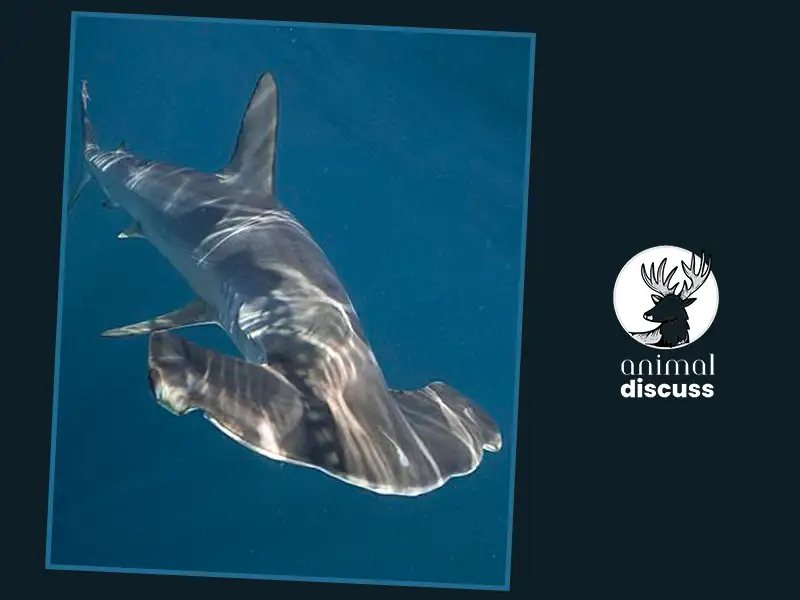
Baby hammerhead sharks survive by hiding from larger predators until they grow large enough to be safe.
They eat a diet similar to adult hammerheads, including fish, octopuses, crabs,
lobsters, and squid. Juvenile hammerheads must be quick to hide to avoid being eaten by larger sharks.
As young hammerhead pups begin their journey to adulthood, their structural adaptations continue to evolve.
These young sharks develop sleek and elongated bodies, reducing hydrodynamic drag. This adaptation ensures efficient movement through water, aiding in hunting and navigation.
Growth – the Early Years
During the initial years of their lives, hammerhead sharks experience rapid growth. They hone their survival skills and adapt to their surroundings. However, as they mature, their growth rate gradually slows down.
When it comes to female scalloped hammerheads, their initial year sees a remarkable spurt, with growth reaching an impressive 63 cm. In contrast, male scalloped hammerheads embark on a steady growth trajectory. Their first year sees an ascent of 54 cm.
Subsequently, in the following years, females witness growth ranging from 23 to 50 cm per year during years 2 to 5. In contrast, male hammerhead growth rates span 22 to 42 cm per year during years 2 to 5.
As the female hammerheads reach maturity, their growth tapers off, spanning 3 to 19 cm per year for years 6 to 13. As the males progress into maturity, years 6 to 8 witness growth rates ranging from 11 to 18 cm per year.
As hammerhead sharks mature, their structural and physical adaptations reach their peak. Here’s a glimpse of their impressive attributes during this phase.
Throughout their lives, hammerhead sharks keep growing, sometimes reaching lengths of up to 20 feet or more. This size contributes to their status as apex predators in the ocean.
Adulthood – the Final Stage
The culmination of the shark life cycle arrives when these creatures reach adulthood. Females reach maturity around 15 years and males reach maturity at 10 years of age.
Fully mature and capable of reproduction, they embark on their solitary hunting journeys.
While most shark species have a lifespan of 20 to 30 years, some Hammerhead sharks can live for up to 44 years, the oldest Hammerhead shark age recorded is 44, making them remarkable long-lived vertebrates in the animal kingdom.
Note that the physical development of sharks varies widely among species, and comprehensive documentation for all remains a challenge due to the complexities of studying them in their natural habitats.
Sensory Development
These magnificent predators boast an array of sensory adaptations that distinguish them from their shark counterparts.
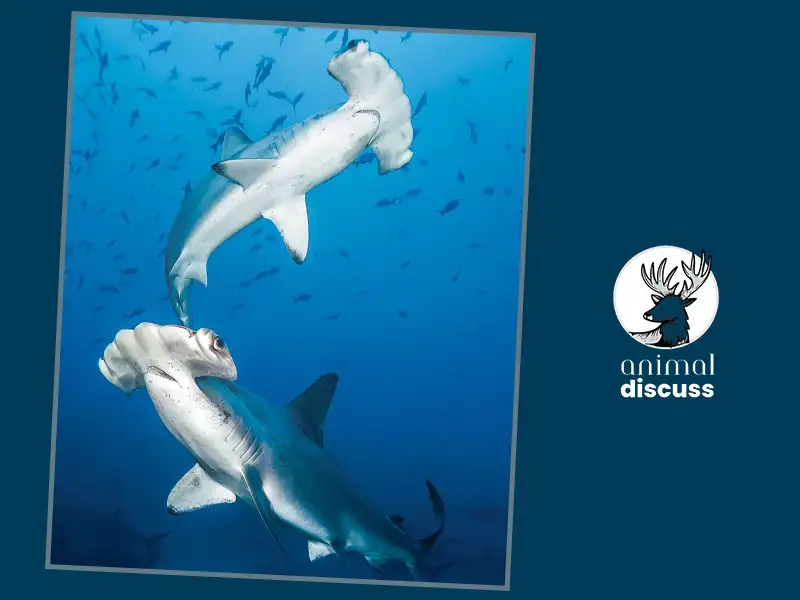
From their extraordinary eyes to their electro-sensitive superpowers, we’re about to uncover the mysteries that underlie their hunting mastery.
The Watchful Gaze
Hammerhead sharks possess eyes strategically positioned on the sides of their distinctive heads, granting them an exceptional visual range.
This unique arrangement sets them apart from their shark counterparts, enhancing their ability to spot potential prey.
Electrosensory Marvels
Nestled beneath their distinctive hammer-shaped heads, hammerhead sharks boast specialized sensory organs known as the ampullae of Lorenzini.
These remarkable sensors, known as the Ampullae of Lorenzini, equip hammerhead sharks with the ability to detect the faint electrical fields generated by prey animals.
This specialized sensory adaptation proves invaluable when hunting for buried prey, such as elusive stingrays concealed beneath the sandy ocean floor.
Scent Tracking
Certain species of hammerhead sharks, such as the scalloped hammerhead, possess olfactory rosettes that occupy a substantial portion of their brain mass.
This heightened sense of smell plays a pivotal role in tracking scent trails left by elusive prey, further showcasing their remarkable sensory adaptations.
Physical Differences Among Common Species of Hammerhead Sharks
There are ten different species of hammerhead sharks that have been discovered so far. Among them, scalloped hammerheads are most common and the scalloped bonnethead hammerheads are known to be endangered ones.
These diverse hammerhead shark species vary in size, appearance, and habitat, making each of them unique in their own right. Here’s a table with distinctive data for different types of hammerhead sharks:
| Species | Maximum Length | Unique Features | Habitat |
|---|---|---|---|
| Great Hammerhead | About 20 feet | Distinguished by a large “hammer” with a notch. Found in Atlantic, Pacific, Indian Oceans, Mediterranean, Black Seas, and Arabian Gulf. | Both close to shore and offshore in warm temperate and tropical waters. |
| Smooth Hammerhead | About 13 feet | Large “hammer” without a notch. Wide distribution from Canada to U.S. coasts, Caribbean, California, Hawaii, Australia, South America, Europe, and Africa. | Seen even in freshwater in Florida’s Indian River. |
| Scalloped Hammerhead | More than 13 feet | Head with narrow blades and a notch on the outer edge. Found in various regions, including Atlantic, Pacific, Mediterranean, Indian, and Red Seas. | Inshore waters, bays, estuaries, and depths up to 900 feet. |
| Scalloped Bonnethead | About 3 feet | More rounded head shape. Limited range in the eastern Pacific from Mexico to Peru. | Limited range in the eastern Pacific. |
| Winghead Shark | About 6 feet | Large, wing-shaped head with narrow blades. Inhabits tropical waters in the Indo-West Pacific. | Shallow, tropical waters from the Persian Gulf to the Philippines and from China to Australia. |
| Scoophead Shark | About 5 feet | Broad, mallet-shaped head with shallow indentations. Found in the eastern Pacific from the Gulf of California to Peru and the western Atlantic Ocean from Panama to Brazil. | Limited information about biology and behavior. |
| Bonnethead Shark | About 5 feet | Narrow, shovel-shaped head. Found in tropical waters in the eastern Pacific and western Atlantic Oceans. | In tropical waters of the eastern Pacific and western Atlantic Oceans. |
| Smalleye Hammerhead | About 5 feet | Broad, arched, mallet-shaped head with deep indentation. Found off the eastern coast of South America. | Off the eastern coast of South America. |
| Whitefin Hammerhead | More than 9 feet | Broad head with narrow blades. Inhabits tropical waters in the eastern Atlantic off the coast of Africa. | In tropical waters of the eastern Atlantic off the coast of Africa. |
| Carolina Hammerhead | More than 8.5 feet | Newly recognized species resembling the scalloped hammerhead but genetically distinct. | Genetic differences from other hammerhead species. |
Feeding Habits of Hammerhead Sharks
Hammerhead sharks are not your average diners of the deep. These marine marvels sport some unique culinary preferences, and we’re here to spill the beans (or should we say fish?) on their feeding habits!
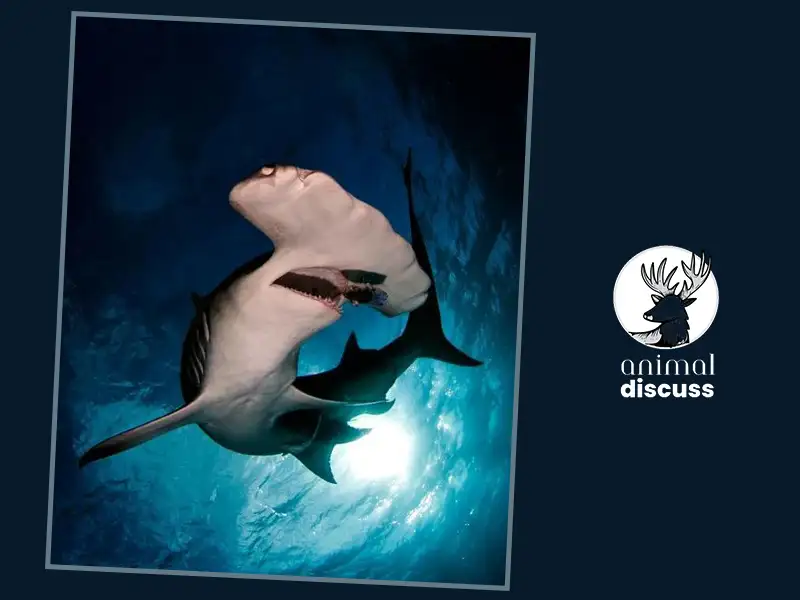
The diet of hammerhead sharks is diverse and varies depending on factors such as their species, size, and available prey in their habitat. Some common components of their diet include:
Various Fish Species
Hammerhead sharks are discerning when it comes to seafood. They feast on an array of fish, ranging from bony sardines to seafloor-dwelling stingrays. Scalloped hammerheads prefer the former, while great hammerheads have a taste for the latter.
Squid Spectacle
Squid is a star on the hammerhead menu. These sharks actively hunt and devour squid when it’s on the menu in their underwater world.
Crustacean Cravings
Crustaceans, including lobsters and their crunchy cousins, also make it to the shark smorgasbord. They provide a delectable source of nutrition for these oceanic carnivores.
Octopus Obsession
Octopuses don’t escape the watchful eyes of hammerhead sharks. When they cross paths with these eight-armed cephalopods, it’s dinner time.
Stingray Surprise
Stingrays are a prized dish for hammerheads, particularly the great hammerheads. These flat fish often laze about on the seafloor, making them an enticing meal.
Shark on Shark
Surprise, surprise! In certain instances, hammerhead sharks might even turn the tables and dine on their fellow sharks. Talk about a predator-versus-predator showdown!
Hunting Strategies of the Hammerheads
Hammerhead sharks, with their iconic hammer-shaped heads, employ a variety of hunting strategies that set them apart as skilled predators of the marine world. These strategies are influenced by their keen senses and unique physical adaptations.
Keen Senses
Hammerhead sharks possess extraordinary sensory adaptations that give them an edge in hunting. Their panorama vision allows them to spot potential prey over a broad area.
Electroreception
Perhaps the most remarkable feature of hammerheads is their electroreception system. As mentioned earlier, the hammer-shaped head, known as the cephalofoil, is lined with specialized sensors called the Ampullae of Lorenzini.
These sensors can detect weak electrical fields produced by prey animals, even those buried under the sand, like stingrays. This unique ability helps hammerheads locate hidden prey with astonishing accuracy.
Nighttime Predators
Hammerhead sharks are primarily nocturnal hunters. Usually, they venture out under the cover of darkness, exploiting the element of surprise to capture their prey. This nighttime strategy allows them to target creatures that are less active during the night, increasing their hunting success.
Habitat Choices
Depending on their species and size, hammerheads choose different habitats for hunting. Great hammerheads, for instance, are known to prey on stingrays, often found on the seafloor.
Their unique hunting technique involves using their cephalofoil to pin down and manipulate their prey before taking a bite.
Efficient Movement
Hammerhead sharks’ streamlined bodies and keen eyes enable them to move efficiently through the water. And their sharp teeth and powerful jaws allow them to take large bites of their prey, making the capture quick and efficient.
Reproductive Behavior of Hammerhead Sharks
Hammerhead sharks reproduce through internal fertilization and viviparous birth. Mothers give live birth to 6-52 pups after 10-11 months gestation.

Females protect vulnerable newborns by corralling them together with their wide heads during early months. These behaviors maximize number of offspring and chances of survival for the species’ next generation.
Fertilization and Gestation Period – The Mysterious Beginning
Hammerhead sharks’ life cycle commences with the enigmatic phases of fertilization and gestation. The gestation period for female hammerheads is 10 to 12 months.
When a female reaches maturity, she releases pheromones to signal potential mates. After mating, she can choose to use the sperm immediately or store it for later use.
Omophagy of Sharks – Survival of the Fittest
Once mating is complete, the intriguing behavior of hammerhead shark embryos begins. In some species, if a female mates with multiple males, the offspring may have different fathers.
And in a rather macabre twist, the embryos develop teeth in utero, which they use to eliminate their own siblings. This ruthless strategy ensures that only the strongest individuals survive.
Social Behavior Pattern of Hammerhead Sharks
Hammerhead sharks are truly unique creatures that display complex social behaviors rarely seen in other shark species.

Let’s explore some of their most interesting social quirks and traits.
Forming Large Schools
One of the hammerhead’s most distinctive habits is gathering in huge groups called schools. These can contain anywhere from a handful to hundreds of sharks swarming together. They often congregate where food is abundant, like coral reefs or river mouths.
Swimming in an enormous pack provides safety through numbers. It helps deter predators looking for an easy lone target. Teamwork also enables more successful hunts. When hammerheads work cooperatively, they can surround and trap prey more efficiently.
Within their schools, hammerheads establish a clear pecking order. The big sharks take the lead role up front, directing movements. Smaller members trail behind, following the cues of their superiors.
Sensing with Electricity
Hammerheads have an almost sixth sense – the ability to detect electrical fields in water. Special organs called ampullae of Lorenzini allow them to pick up on the electric signals of potential prey.
This keen electroreception also alerts them to nearby predators or threats.
In addition to their electric sense, hammerheads use body language. They might sway, bump into each other, or make sudden movements to convey information.
An arching back and raised head indicate aggression, while a retreating shark signals submission.
Navigational Behavior
Hammerheads are famous long-distance travelers, migrating thousands of miles annually. In summer, they voyage towards cooler regions, then head back to warmer latitudes in winter.
Some populations return to the same sites every year with incredible precision.
Scientists believe they move so far to follow optimal temperatures, find seasonal food sources, and reach important breeding areas. Their epic migrations demonstrate advanced navigation and homing abilities.
Human Interaction Behavior
Hammerhead-human run-ins are extraordinarily rare. And when they do occur, they tend to be benign and non-threatening.
According to data from the International Shark Attack File, hammerheads are responsible for only a tiny fraction of shark attacks on people. Most hammerhead species max out at a modest size and are considered harmless to us.
These sharks are inherently shy and actively avoid contact with humans. They prefer feeding on small fish and shellfish, not large mammals like us. Their petite mouths and non-aggressive demeanor mean they do not view humans as prey.
If you have the privilege of encountering one of these gentle giants, it’s best to keep a respectful distance. Avoid provoking or encroaching on the animal in any way. If approached, calmly back away to give the shark space.
While fascinating, hammerheads and their relatives, the sharks face severe threats from overfishing and habitat loss. Groups like American Oceans advocate for greater protections for these crucial ocean predators.
Remember – attacks get headlines, but sharks want nothing to do with us. By understanding the truth about hammerhead behavior, we can better coexist with these invaluable creatures.
With care and conservation, humans and hammerheads can peacefully share the ocean’s bounty.
Migratory Pattern of the Hammerhead Sharks
The migratory habits of hammerhead sharks are intricate and depend on the shark’s age and sex. Juvenile hammerheads of both genders tend to linger in shoreline waters during their first few years.
Female juveniles depart these nursery zones earlier, between ages 3-5, while males leave later at 4-7 years old. Hammerheads are partial to shallow coastal areas, with just some opting for deeper habitats their whole lives.
Large hammerhead species such as the great hammerhead traverse enormous distances worldwide, crossing country borders.
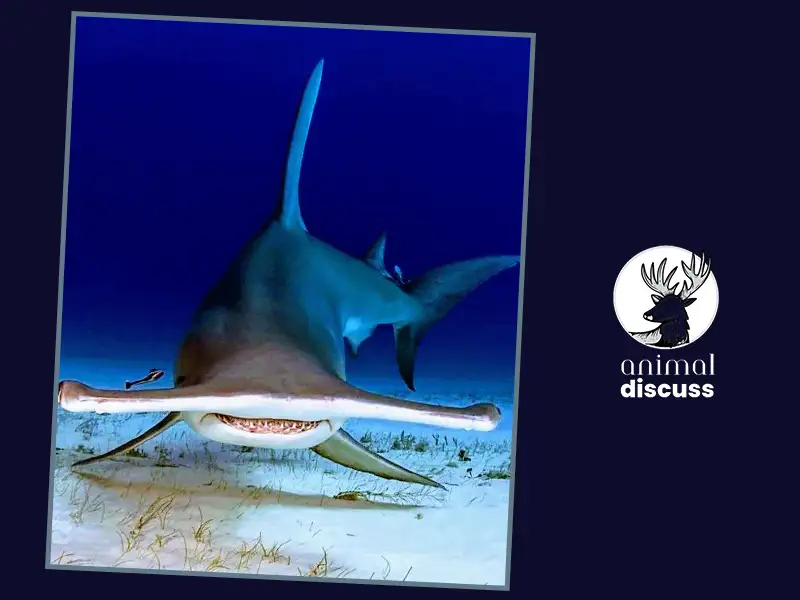
Other kinds, including lemon, hammerhead and tiger sharks, also travel thousands of kilometers within the Bahamas and Florida vicinity.
Pregnant female scalloped hammerheads embark on remarkable voyages from the Galapagos Islands to Isla del Coco, over 700 km away, to give birth.
One smooth hammerhead shark was tracked traveling an astounding 6600 km in a north-south trans-equatorial migration.
Hammerhead sharks can migrate locally as juveniles but also over massive distances as adults. Their migration habits are multifaceted with variations between species, age groups and reproductive status.
Understanding these migration patterns is vital for conservation efforts like designating protected zones along their migratory routes.
Effective management of hammerhead populations necessitates international coordination, given their far-roaming migrations crossing jurisdictional lines.
Ecological Significance of Hammerhead Sharks
These iconic ocean predators are more than just a sight to behold – they are vital to maintaining the health of our oceans.
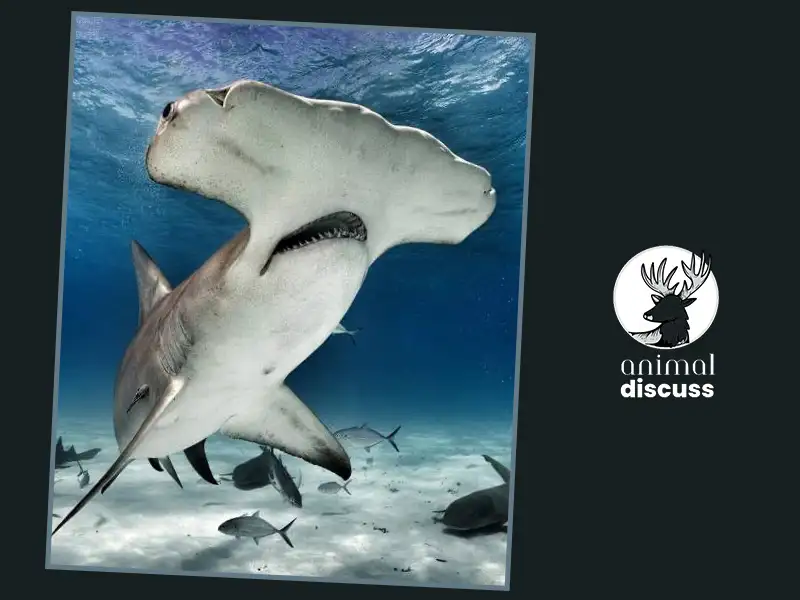
Find out the ecological significance of hammerhead sharks and why their presence in our seas is crucial.
Top of the Food Chain
These sharks reign as apex predators, with no natural enemies in the underwater world. This top-tier status allows them to keep the ocean’s delicate balance in check.
By preying on the weak and injured, hammerheads help ensure the health of their prey populations while influencing their distribution.
Sustaining Fish Stocks
In pristine ocean ecosystems, hammerhead sharks help maintain stable fish populations. By regulating their prey’s numbers, they prevent overfishing, safeguarding the livelihoods of communities dependent on fishing.
Guardians of Coral Reefs and Seagrass Beds
Coral reefs and seagrass beds are marine hotspots teeming with life. Hammerheads play a pivotal role in keeping these habitats vibrant by preventing overgrazing through their prey regulation.
Migratory Marvels
Known for their incredible long-distance migrations spanning thousands of miles, hammerhead sharks act as nature’s distributors, circulating nutrients and energy across the seas, bolstering the health of the ecosystem.
Scientific Superstars
These sharks are also vital for scientific research. Studying their behavior and ecology yields insights into ocean ecosystems, aiding in the development of conservation strategies and habitat protection.
Hammerhead sharks are ecologically significant champions of the oceans. They regulate prey populations, support fisheries, nurture critical habitats, embark on epic migrations, and fuel scientific discoveries.
Protecting these oceanic icons is essential to safeguard the health of our seas and the myriad species that call them home.
How to Conserve the Hammerhead Sharks?
It’s needless to say, the Hammerhead Sharks are one of the most important parts of the already failing ecosystems of the planet Earth.
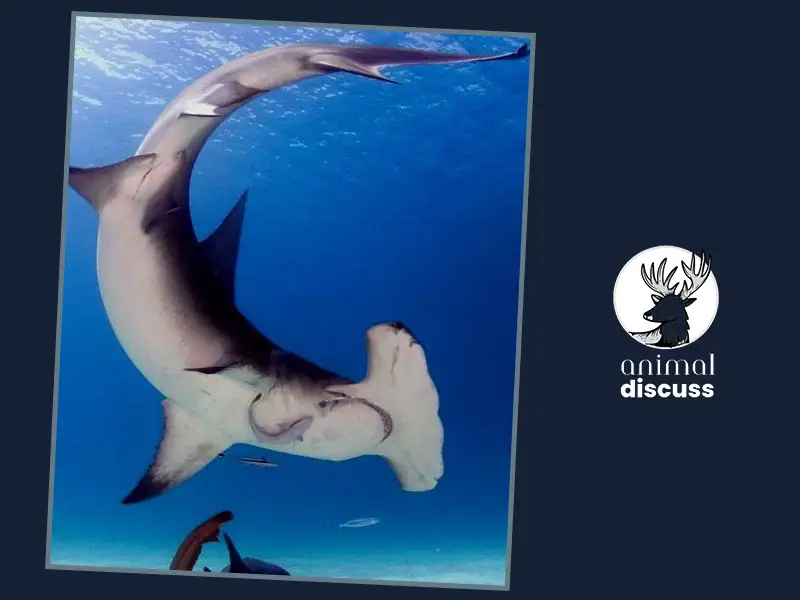
Here are some ways we can conserve them for our own good.
Ramp Up Protection
Hammerhead sharks deserve stronger safeguards, and it’s up to governments to lead the way. Initiatives like adding hammerhead sharks to the SPAW Protocol Annex II list can elevate their protection status.
In regions like New South Wales, Australia, these sharks are already recognized as threatened species, but more can be done.
Mitigate Bycatch
Hammerheads often find themselves unintended victims in fishing operations. To minimize this, we need to revamp our fishing gear. Modifications to tools like gillnets and drumlines can significantly reduce the risk of catching hammerheads.
It’s high time fishery reports provide detailed species-specific data rather than lumping them under a generic “hammerheads” category.
Champion Sustainable Fishing
Our efforts must center on sustainable fishing practices. This means setting catch limits, minimizing the use of destructive fishing gear, and promoting responsible fishing practices. By doing so, we can curtail the impact of fishing on hammerhead populations.
Raise a Unified Voice
Education and awareness are key to securing a future for hammerhead sharks. We can rally support through education programs, media campaigns, and the influential reach of social media. Spreading the word about the importance of these sharks and the threats they face is paramount.
Back Conservation Initiatives
There are champions on the frontlines working tirelessly to protect hammerhead sharks and their habitats. You can join the cause by supporting these efforts through donations or volunteering your time.
In closing, hammerhead sharks are indispensable to the oceans, but their survival hangs in the balance.
By advocating for stronger protection, reducing bycatch, championing sustainable fishing, raising awareness, and supporting conservation endeavors, we can ensure these remarkable creatures continue to thrive in our seas. Together, we can be the guardians of the deep.
Final Thoughts
As apex predators, the majestic hammerhead sharks are integral to ocean health. Their unique flattened heads allow supreme sensory perception to hunt efficiently.
Safeguarding hammerhead populations ensures stability across the marine food web. We must respect these iconic creatures and be steadfast stewards of the seas that sustain them.

